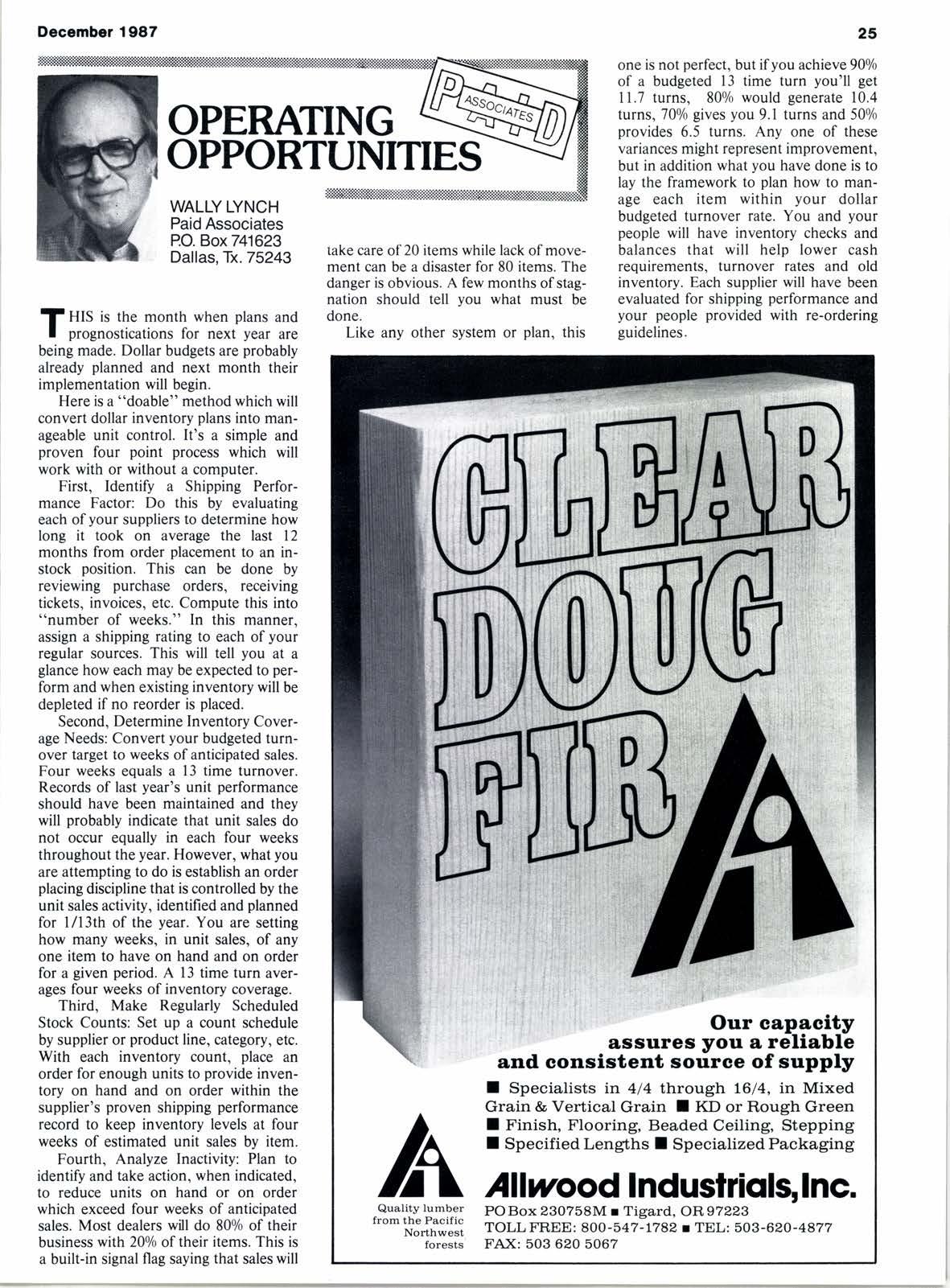
2 minute read
OPERANNG OPPORTUNITIES
WALLY LYNCH Paid Associates PO. Box 741623 Dallas. Tx.75243
f HtS is the month when plans and I prognostications for next year are being made. Dollar budgets are probably already planned and next month their implementation will begin.
Here is a "doable" method which will convert dollar inventory plans into manageable unit control. It's a simple and proven four point process which will work with or without a computer.
First, Identify a Shipping Performance Factor: Do this by evaluating each of your suppliers to determine how long it took on average the last 12 months from order placement to an instock position. This can be done by reviewing purchase orders, receiving tickets, invoices, etc. Compute this into "number of weeks." In this manner, assign a shipping rating to each of your regular sources. This will tell you at a glance how each may be expected to perform and when existing inventory will be depleted if no reorder is placed.
Second, Determine Inventory Coverage Needs: Convert your budgeted turnover target to weeks ofanticipated sales. Four weeks equals a l3 time turnover. Records of last year's unit performance should have been maintained and they will probably indicate that unit sales do not occur equally in each four weeks throughout the year. However, what you are attempting to do is establish an order placing discipline that is controlled by the unit sales activity, identified and planned for l/l3th of the year. You are setting how many weeks, in unit sales, of any one item to have on hand and on order for a given period. A 13 time turn averages four weeks of inventory coverage.
Third, Make Regularly Scheduled Stock Counts: Set up a count schedule by supplier or product line, category, etc. With each inventory count, place an order for enough units to provide inventory on hand and on order within the supplier's proven shipping performance record to keep inventory levels at four weeks of estimated unit sales by item.
Fourth, Analyze Inactivity: Plan to identify and take action, when indicated, to reduce units on hand or on order which exceed four weeks of anticipated sales. Most dealers will do 800/o of their business with 200/o of their items. This is a built-in signal flag saying that sales will take care of 20 items while lack of movement can be a disaster for 80 items. The danger is obvious. A few months of stagnation should tell you what must be done.
Like any other system or plan, this one is not perfect, but ifyou achieve 90% of a budgeted 13 time turn you'll get 11.7 turns, 80% would generate 10.4 turns, 700/o gives you 9.1 turns and 500/o provides 6.5 turns. Any one of these variances might represent improvement, but in addition what you have done is to lay the framework to plan how to manage each item within your dollar budgeted turnover rate. You and your people will have inventory checks and balances that will help lower cash requirements, turnover rates and old inventory. Each supplier will have been evaluated for shipping performance and your people provided with re-ordering guidelines.









